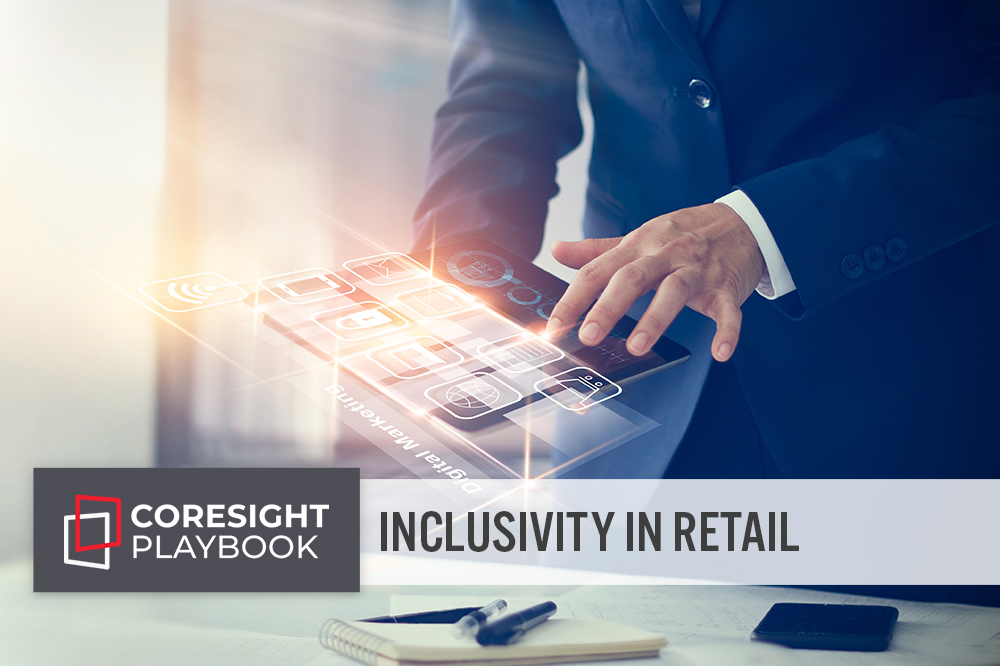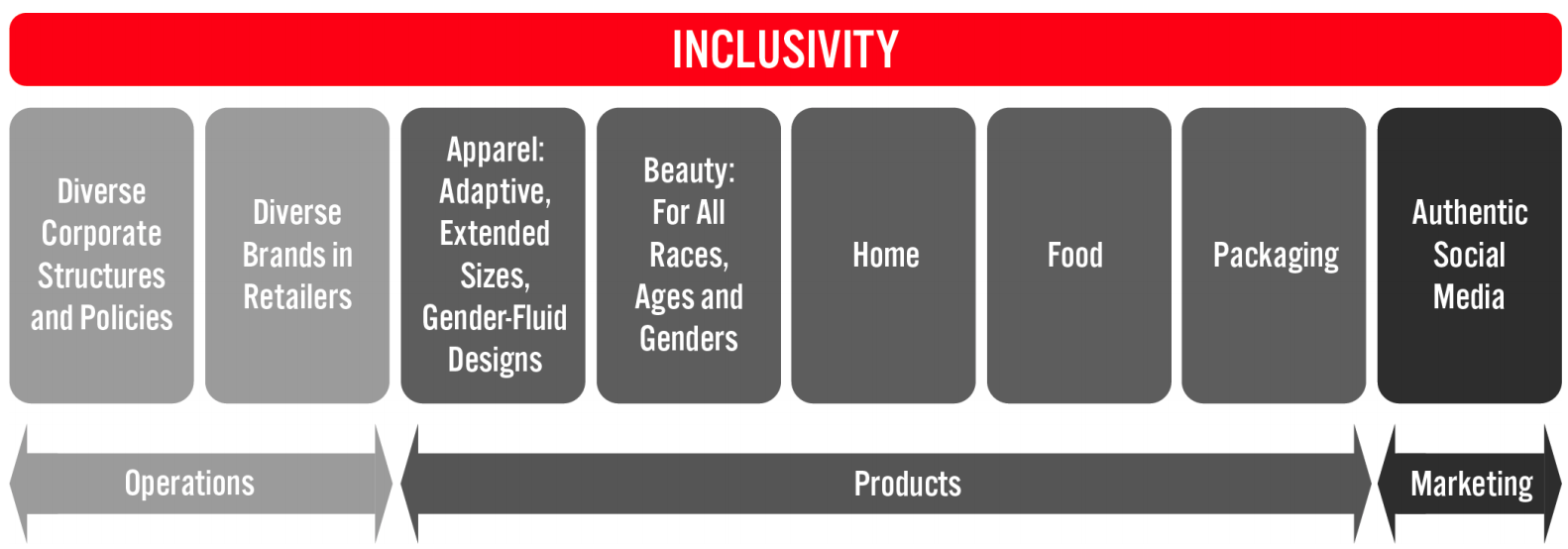
Nitheesh NH
This Research Preview offers an early look at our research on inclusivity in retail, from our forthcoming Playbook.
 Source: Coresight Research[/caption]
Source: Coresight Research[/caption]
 Source: Coresight Research[/caption]
1. Determine Strategic Inclusivity Goals
The first step provides a roadmap for the organization; subsequent decisions and tasks should fall in line with the company’s strategic goals. There are opportunities for brands and retailers to incorporate inclusivity into products, grow their customer base to include underrepresented segments, better represent consumers on social media and have more diverse corporate structures and policies.
Brands should assess how inclusivity fits into the brand ethos and where inclusivity is a priority. Brands should consider a number of questions around the company’s vision, customers and internal operations as they undertake this exercise—the answers to which will help them determine the areas of focus and opportunity. We offer three examples below:
Source: Coresight Research[/caption]
1. Determine Strategic Inclusivity Goals
The first step provides a roadmap for the organization; subsequent decisions and tasks should fall in line with the company’s strategic goals. There are opportunities for brands and retailers to incorporate inclusivity into products, grow their customer base to include underrepresented segments, better represent consumers on social media and have more diverse corporate structures and policies.
Brands should assess how inclusivity fits into the brand ethos and where inclusivity is a priority. Brands should consider a number of questions around the company’s vision, customers and internal operations as they undertake this exercise—the answers to which will help them determine the areas of focus and opportunity. We offer three examples below:
Inclusivity Touches All Aspects of an Organization
Inclusivity, providing equal access for people who might otherwise be excluded or marginalized, has accelerated in light of the racial justice movement in the US helping to inspire a global conversation about diversity and representation. It is a thread that touches every part of an organization, both internally and externally. Inclusivity is guided by an organization’s strategic goals and mission. Internally, it covers operations, employees, corporate policies and procedures, and brand partnerships. Inclusivity also spans the types of products that organizations produce. Externally, inclusivity includes how organizations and products are branded, marketed and targeted, as well as represented on social media. Figure 1. Inclusivity Spans Operations, Products and Marketing [caption id="attachment_126557" align="aligncenter" width="720"] Source: Coresight Research[/caption]
Source: Coresight Research[/caption]
Strategies for Organizations To Implement Inclusivity
Coresight Research has identified five strategies for brands and retailers to align inclusivity across their organization internally and across their product portfolio. We provide insights from three of the strategies below. We further explore these—and the remaining strategies not covered in this report—in detail in the full version of our Playbook on inclusivity, which also offers contextual discussion for various sectors. Figure 2. Five Strategies for Organizations To Align Inclusivity Across Operations, Products and Marketing [caption id="attachment_126558" align="aligncenter" width="720"] Source: Coresight Research[/caption]
1. Determine Strategic Inclusivity Goals
The first step provides a roadmap for the organization; subsequent decisions and tasks should fall in line with the company’s strategic goals. There are opportunities for brands and retailers to incorporate inclusivity into products, grow their customer base to include underrepresented segments, better represent consumers on social media and have more diverse corporate structures and policies.
Brands should assess how inclusivity fits into the brand ethos and where inclusivity is a priority. Brands should consider a number of questions around the company’s vision, customers and internal operations as they undertake this exercise—the answers to which will help them determine the areas of focus and opportunity. We offer three examples below:
Source: Coresight Research[/caption]
1. Determine Strategic Inclusivity Goals
The first step provides a roadmap for the organization; subsequent decisions and tasks should fall in line with the company’s strategic goals. There are opportunities for brands and retailers to incorporate inclusivity into products, grow their customer base to include underrepresented segments, better represent consumers on social media and have more diverse corporate structures and policies.
Brands should assess how inclusivity fits into the brand ethos and where inclusivity is a priority. Brands should consider a number of questions around the company’s vision, customers and internal operations as they undertake this exercise—the answers to which will help them determine the areas of focus and opportunity. We offer three examples below:
- Is inclusivity part of the brand product strategy?
- How is the brand perceived today?
- How does the target consumer fit in with the brand's position in the future?
- Coresight Research estimates that the extended-size women’s clothing market will reach $32.3 billion in 2021, representing approximately 20.7% of the total women’s apparel market. According to the Centers for Disease Control and Prevention, 73.6% of all US adults over the age of 20 are overweight, which presents an opportunity for brands and retailers to tap into plus-size fashion.
- We expect spending in the adaptive apparel and footwear market to total approximately $1.3 billion in 2021, with a total addressable market of $64.3 billion. In 2019, 41.1 million individuals reported disabilities in the US, according to the US Census Bureau.
Implications for Brands and Retailers
- Inclusivity is guided by the organization’s strategic goals and mission. Organizations have an opportunity to reassess strategic inclusivity goals to determine the areas of focus and opportunity as brands and retailers look at their vision, customers and internal operations.
- Organizations should align inclusivity strategic goals across the organization. Ultimately, having more inclusive organizations, products and suppliers benefits brands and retailers because more diverse organizations better represent the customers that they serve.
- In nearly every retail category, there are growth opportunities for brands and retailers to expand their current product portfolios to reach underrepresented consumers. Often, inclusive products present white space-opportunity as demand exceeds supply.